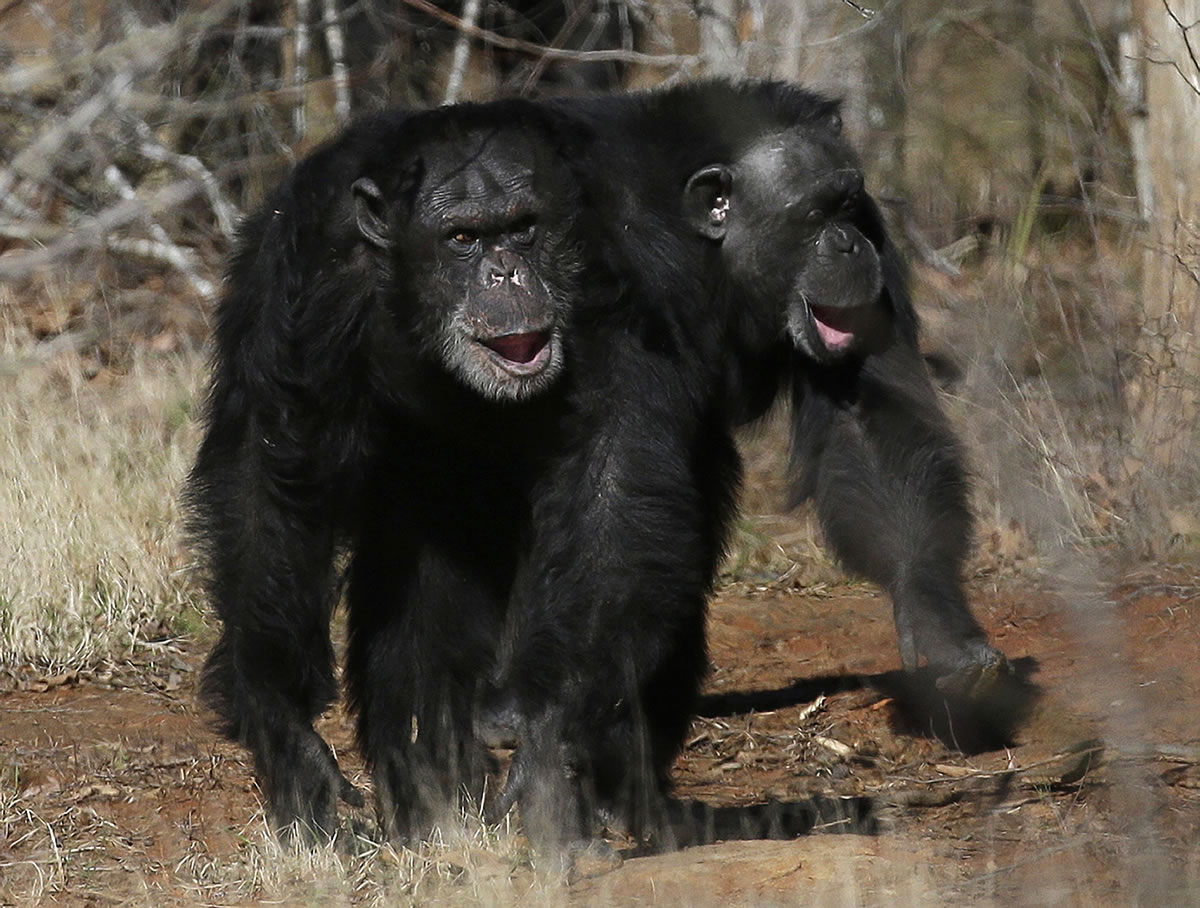WASHINGTON — In a significant step toward ending controversial biomedical research using chimpanzees, the federal government announced a decision Wednesday to retire all but about 50 of the animals available for testing and send them to sanctuaries.
The National Institutes of Health has been phasing out its funding and use of research chimps for at least two years but still houses nearly 400 chimps in facilities across the country. All but up to 50 of those remaining will be placed in sanctuaries in the coming months, NIH Director Francis Collins said.
“Americans have benefitted greatly from the chimpanzees’ service to biomedical research, but new scientific methods and technologies have rendered their use in research largely unnecessary,” Collins said in a statement.
Later, during a telephone news conference, he called the decision a milestone, saying chimps are “special animals, our closest relatives” whose DNA is “98 percent . . . the same as ours.”
The announcement by NIH comes two weeks after the U.S. Fish and Wildlife Service proposed to place both wild and captive chimps on the endangered species list for the first time. Previously, captive chimps were listed as threatened, a designation that carries fewer protections. The split listing under the Endangered Species Act allowed NIH to fund medical experiments using captive chimps.
Animal rights activists who pressured NIH for decades to end its testing of chimps saw the Fish and Wildlife proposal as a direct message to the health agency. The Humane Society of the United States, the Association of Zoos and Aquariums and the Jane Goodall Institute hailed the two decisions.
Chimpanzees are under a growing threat. More than a million have disappeared in the wild since 1900, according to estimates by the International Union for the Conservation of Nature and Natural Resources. Fewer than 300,000 remain as people invade their habitats.
Wednesday’s announcement had no bearing on rhesus macaques and other monkeys NIH continues to use for invasive biomedical research. “This set of decisions relates solely to chimpanzees. There are no implications for other animals. That research NIH believes is still vital,” Collins said.
Ongoing behavioral research using apes can continue until their scheduled completion in the next year or two, NIH officials said. The 50 chimps that will remain available for new research will be chosen over the next several months.
NIH has 150 sanctuary spaces available. As of October, about 110 chimps were already housed at one sanctuary, Chimp Haven in Louisiana, at a yearly cost of $2 million. Chimps placed in sanctuaries are protected and can’t be moved back to research.
NIH officials said the agency will seek $3 million from Congress for 2014 to house more animals in sanctuaries. Congress provided up to $30 million for sanctuaries as part of the 2000 CHIMP Act, but NIH is $800,000 from reaching that limit.
“This is certainly a monumental moment for the chimpanzees,” said Kathleen Conlee, vice president of animal research issues for the Humane Society. “It has been a long road to get here and now it is time to roll up our sleeves and focus on getting those animals to the peaceful sanctuary they so deserve. “
Conlee’s group, along with the zoo association and the Goodall Institute, named after the famed chimpanzee researcher Jane Goodall, was instrumental in pushing Fish and Wildlife toward its proposal, filing a petition to list captive great apes as endangered in 2010.
The groups had long said that medical research using chimps was unnecessary. In January, an advisory panel for NIH agreed and issued 28 recommendations, including the retirement of all but up to 50 chimps, to ensure that at least some research using higher primates can continue that might be crucial to human health.
Collins accepted nearly all the recommendations. The panel, called the Council of Councils, determined that chimpanzees should be used in research only if the knowledge obtained will advance public health and can be found no other way. NIH maintains that research on chimps led to breakthroughs that provided vaccines for hepatitis.
The council deemed that chimpanzees should be treated well in pens with far more space than the current average of 25 square feet per animal.
At the headquarters of People for the Ethnic Treatment of Animals in Norfolk, Va., the organization was “popping champagne corks . . . to celebrate the news that NIH has brought the U.S. one step closer to ending a shameful 90-year history of treating chimpanzees as disposable laboratory tools and ignoring the apes’ profound psychological and physical needs,” said Justin Goodman, a director at PETA.



